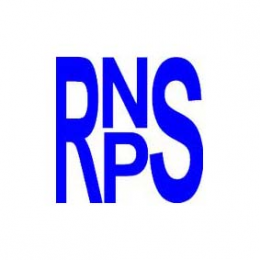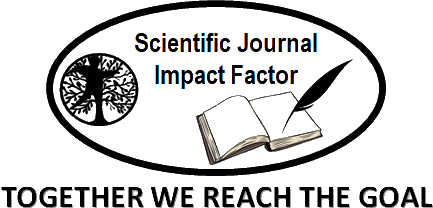Recombinant streptokinase and acute myocardial infarction
Abstract
Background: from the study of the Italian Group per lo Studio del la Strepto-chinasi nell’Infarto Miocardico in 1986, the approach of the treatment of acute myocardial infarction changed. The use of thrombolytic drugs is considered a current challenge in medical therapeutics.
Objective: to deepen on the knowledge of recombinant streptokinase for the treatment of acute myocardial infarction.
Methods: a bibliographic review of 197 articles published in VHL Cuba, Pubmed, SciELO and Medline was conducted through the information locator Endnote. Of these, 31 selected citations were used to perform the review, 16 of them from the last five years.
Development: acute myocardial infarction is associated with chest pain, oppressive, irradiated to the neck and jaw that lasts more than 20 minutes, it is not relieved by the administration of Nitroglycerin and it is accompanied by neurovegetative manifestations. For the treatment of this condition, it is necessary the use of fibrinolytic substances, which bases its origin on the property that has the plasmin to act on the fibrin of the thrombus and dissolve it. Streptokinase is a protein of bacterial origin, considered as an exogenous activator of plasminogen. It constitutes an effective thrombolytic, which showed that it produces frank improvement of the blood flow. Because it is a foreign protein, it can cause allergic reactions and hypotension, as well as mild or severe hemorrhages in the skin, subcutaneous cellular tissue or internal organs.
Conclusions: the mechanism of action of recombinant streptokinase is the formation of a complex that favors the conversion of endogenous plasminogen into plasmin, which hydrolyzes fibrin and dissolves the thrombus producing a systemic fibrinolysis state. The thrombolytic therapy associated with the use of recombinant streptokinase is based on clinical and electrocardiographic inclusion and exclusion criteria as a protocol in the care units.
DeCS: MYOCARDIAL INFARCTION/therapy; MYOCARDIAL INFARCTION/drug therapy; STREPTOKINASE/therapeutic use; THROMBOLYTIC THERAPY/adverse effects; FIBRINOLYTIC AGENTS/therapeutic use.
Downloads
References
1. Bosch Genover X. Cardiopatía isquémica. En: Von Domarus A, Farreras Valenti P, Rozman C, Cardellach L. Farreras-Rozman. Medicina Interna. 17 ed. Barcelona: Elsevier; 2012:p.471-492.
2. Trueba Rodríguez D, Álvarez Toledo O, Hernández Pedroso W, Castillo López B, López Palomares M, Morejón Cabrera D. Caracterización del infarto agudo de miocardio sin onda q según cambios electrocardiográficos. Rev cuba med int emerg [Internet]. 2008 [citado 5 Dic 2016];7(3):[aprox. 15 p.]. Disponible en: http://bvs.sld.cu/revistas/mie/vol7_3_08/mie06308.htm
3. Rodulfo García M, de Dios Lorente JA. Infarto Agudo del Miocardio sin elevación del segmento T. Consideraciones fisiopatológicas y clínicas. Medisan [Internet]. 2010 Jun [citado 1 Feb 2019];14(4):[aprox. 17 p.]. Disponible en: http://scielo.sld.cu/sci elo.php?sc ript=sci_arttext&pid=S1029-30 19 20 100 004 00016 &lng=es
4. Lóriga García O, Pastrana Román I, Quintero Pérez W. Características clínico epidemiológicas de pacientes con infarto miocárdico agudo. Rev Ciencias Médicas [Internet]. Dic 2013 [citado 1 Feb 2019];17(6):[aprox. 13 p.]. Disponible en: http://scielo.sld.cu/scielo. php?script=sci_arttext&pid =S15 6131942013000600005&lng=es&nrm=iso&tlng=es
5. Saldarriaga C, Bedoya L, Gómez L, Hurtado L, Mejía J, González N. Conocimiento del riesgo de presentar un infarto de miocardio y las barreras para el acceso al estilo de vida saludable. Rev Colomb Cardiol [Internet]. 2016 [citado 21 Feb 2017];23(3):[aprox. 93 p.]. Disponible en: http://www.elsevier.es/es-revista-revista-colombiana-cardiologia-203-articulo-conocimiento-del-riesgo-presentar-un-S0120563315001655
6. Díaz Águila H, Santos Monzón Y, Fragoso Estévez A, Rivero Nóbrega Y, Alonso Freire JL. Rotura del septo interventricular después de Infarto Agudo de Miocardio con apertura y cierre intermitentes. CorSalud [Internet]. 2013 [citado 1 Feb 2019];5(1):[aprox. 7 p.]. Disponible en: http://www.corsal ud.sld .cu/sumario/2013/ v5n1a13/c iv.httml
7. Ministerio de Salud Pública. Dirección Nacional de Registros Médicos y Estadísticas de Salud Anuario Estadístico de Salud 2017 [Internet]. La Habana; 2018 [citado 4 Ene 2019]. Disponible en: http://www.sld.cu/anuncio/2018/04/06/publicado-el-anuario-estadistico-de-salud-2017
8. Morales García JC, Rodríguez Sánchez LA, Martínez Rodríguez I. Eficacia de la retrombolisis con el mismo agente farmacológico en pacientes con síndrome coronario agudo. Mediciego [Internet]. 2012 [citado 25 Feb 2017];18:[aprox. 5 p.]. Disponible en: http://bvs.sld.cu/revistas/mci ego/vol_18noespc_201 2/a rticulos/t-17.html
9. Martínez Espinosa C. Tratamiento Trombolítico del Infarto Agudo del Miocardio. En: Caballero López A. Terapia Intensiva. 2a Ed. La Habana: Editorial Ciencias Médicas; 2007.p. 828-837.
10. Casola Crespo R, Casola Crespo E, Castillo Sánchez G, Casola Barreto E. Estreptoquinasa a casi 30 años de demostrada su eficacia en el infarto agudo de miocardio. AMC [Internet]. 2016 [citado 3 Feb 2017];20(1):[aprox. 12 p.]. Disponible en: http://scielo.sld.cu/pdf/amc/v20n1/amc140116.pdf
11. Del Toro Cámbara A, Pozo Pozo D, Díaz Calzada M, Dot Pérez LC, Pereda Rodríguez Y. Trombolisis en el Infarto Agudo del Miocardio en servicio de emergencias. Rev Ciencias Médicas [Internet]. 2013 [citado 13 Feb 2017];17(6):[aprox. 11 p.]. Disponible en: http://scielo.sld.cu/ scielo.php?script =sci_arttext&pid=S1561-3194 2 013000600004&lng=es&nrm=iso&tlng=es
12. Cué Brugueras M. Agentes trombolíticos en el Infarto Agudo del Miocardio. Rev Cubana Farm [Internet]. 1995 [citado 4 Feb 2019];29(2):[aprox. 5 p.]. Disponible en: http://scielo.sld.cu/s cielo.php?script=sci_ arttex t&pid =S0 0347 515199 5000 20 0010&lang=pt
13. Delgado Rodríguez AE, Fernández González JL, Brown Sotolongo C, León Pimentel OA, Flores Podadera H, García Portela RA. Estrés oxidativo e Infarto Agudo del Miocardio. Rev cubana med [Internet]. 2002 [citado 10 Ene 2017];41(6):[aprox. 7 p.]. Disponible en: http://scielo.sld.cu/scielo.ph p?scri pt=sci_artt ext& pid =S0 3475 232002000600004&lang=pt
14. Quintero Pérez W, Quevedo Hernández A, Corrales Varela AI, Peláez Yáñez LA, García Otero M. Algunos aspectos clínico epidemiológicos en pacientes con Infarto Agudo del Miocardio. Rev Ciencias Médicas [Internet]. 2011 [citado 18 Ene 2017];15(4):[aprox. 11 p.]. Disponible en: http://scielo.sld.cu/sc ielo.php?script=sci_ar ttext&pid=S156131942 011000 400013&lang=pt
15. Arjona Rodríguez I, Riverón González JM. Cardiopatía isquémica: síndrome coronario agudo. En: Peraza Rodríguez G. Diagnóstico y tratamiento en medicina interna. La Habana: Editorial Ciencias Médicas; 2012. p.125-36.
16. Gómez Pacheco R. Formas clínicas de presentación del infarto agudo del miocardio. Medicentro [Internet]. 2014 [citado 20 Dic 2016];18(4):[aprox. 4 p.]. Disponible en: http://www.mmedicen tro.sld.cu/index.php/m edicentro/a ticle/view/1666/1426
17. Thygesen K, Alpert JS, White HD, Joint ESC/ACCF/AHA/WHF Task Force for the Redefinition of Myocardial Infarction. Universal Definition of Myocardial Infarction. Eur Heart J. 2007 Oct;28(20):2525-2538.
18. Cortina García A. Actualizaciones en métodos diagnósticos y terapéuticos de afecciones coronarias. Rev Española Cardiol. 2006;6(8):8-15.
19. Ríos Hidalgo N. Patología General. La Habana: Editorial Ciencias Médicas; 2014.
20. Cigales Reyes MJ. Dolor lumbar por Estreptoquinasa recombinante. Presentación de un caso. Rev Cubana Farm [Internet]. 2009 [citado 19 Ene 2017];43(2):[aprox. 6 p.]. Disponible en: .http://scielo.sld.cu/s cielo .php ?scri pt=s ci_arttext&pid=S00 3475152009 00020 001 3 & lng =e s& nr m =i so&tlng=es
21. Mainet González D, Padrón Brito N, Abdo Cuza A. Fibrinolysis with recombinant streptokinase affects the prognostic value of cardiac troponin I in acute myocardial infarction: a ten-day follow-up. Biotecnol Apl [Internet]. 2010 Sep [citado 14 Feb 2019]; 27(3): [aprox. 6 p.]. Disponible en: http://scieloprueba.sld .cu/sci elo.php?script=sci_arttext&pid=S1027-285 22 010000300005&lng=pt
22. Sánchez Labañino S, Seuret Hernández N, Mayo Abad O. Mejoras en la etapa de conformación del ingrediente farmacéutico activo de la Estreptoquinasa recombinante. RTQ [Internet]. 2015 [citado 15 Nov 2016];35(2):[aprox. 14 p.]. Disponible en: http://pesquis abvsalud.org/ portal/resourc e/pt/ibc-MFM2 -7940?view =mobile
23. Morón Rodríguez FJ, Borroto Regalado R, Calvo Barbado DM, Cires Pujol M, Cruz Barrios MA, Fernández García A. Farmacología Clínica. La Habana: Editorial Ciencias Médicas; 2009.
24. Calvo Barbado DM, Delgado Martínez. Formulario Nacional de Medicamentos. 4ta. Ed. La Habana: Ecimed;2014.
25. Olivera Garzón J. Análisis actualizado sobre enfermedades cardiovasculares. Rev Med Intensiva. 2006;96(4):21-23.
26. Murria C, Albert J. Diagnosis of acute myocardial infarction. Curr opin Cardiol 2008;8(15):426-9.
27. Olivera Escalona AL. Reperfusión coronaria en el infarto agudo del miocardio con elevación del segmento ST: importancia del contexto y tiempo de aplicación. MEDISAN [Internet]. 2015 [citado 25 Nov 2016];19(10):[aprox. p.]. Disponible en: http://s cielo.sld.cu/ scielo.ph p?s crip t=sci _arttex t&pid=S1029-30192015001000 011 &lng=es&nrm=iso&tlng=es
28. Mariani J, De Abreu M, Tajer CD. Tiempos y utilización de terapia de reperfusión en un sistema de atención en red. Rev Argent Cardiol [Internet]. 2013 [citado 10 Ene 2017];81(3):[aprox. 2 p.]. Disponible en: http://www.scielo.org.ar/scielo.php?script= sci_arttext&pid=S1850-3748 201300 0 300005
29. O'Gara PR, Kushner F, Ascheim D, Casey D, Chung M, de Lemos JA. Guideline for the management of ST-elevation myocardial infarction. J Am Coll Cardiol [Internet]. 2013 [citado 16 Ene 2017];61(4):[aprox. p.]. Disponible en: http://cont ent .onlinejac c.org/arti cle.aspx?articleid=1486115
30. Marrero Miragaya MA. Estrategia de desarrollo clínico para la evaluación de eficacia y seguridad de la estreptoquinasa recombinante en Cuba [Tesis doctoral]. La Habana: Centro Nacional de Ensayos Clínicos; 2012 [citado 16 Dic 2016]. Disponible en: http://tesis.repo.sld.cu/694/1/TESIS-ETE-SKR-final.pdf
31. Sanchisa J, Avanzasa P, Bayes Genisa A, Pérez L, Heras M. Síndromes coronarios agudos: nuevas estrategias de diagnóstico y tratamiento. Rev Esp Cardiol. 2014;67(2):138.













